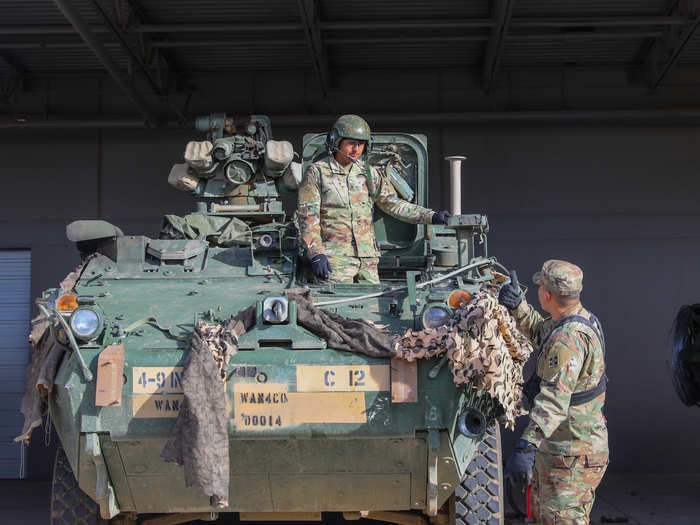
"We want to make sure they understand as much as they can so these master drivers can teach soldiers from their battalions how to safely operate and maintain the vehicles," Feeney said.

"I think the biggest thing I learned is how the roles and responsibilities of the driver and truck commander (TC) have changed," said Sgt. Andrew Gonzalez, master driver, Charlie Company, 704th Brigade Support Battalion, 2nd IBCT. "When you're driving (a Stryker), the visibility is lower so you have to depend on your TC a lot more."

"You have to really pay attention to (the vehicles) during maintenance because there are a lot of moving pieces and these vehicles can break down fast and stop the mission," said Feeney. "These vehicles aren't top heavy or prone to rolling, but they can roll a lot easier than people think, so being safe is crucial."

"Teamwork between the brigades … is very important because we can pass off our lessons learned to one another," he explained. "Some of us have taken these Strykers to multiple field training exercises so we know the capabilities and limitations of these vehicles."

"We know these guys have gone through training cycles with these vehicles and they are able to give us pointers, not solely on the operations of the vehicle, but also on … load plans and what to expect in certain terrain — (things) a manual can't tell you," Gonzalez said.
Throughout the course, the 2nd IBCT master drivers learned the ins and outs of the Stryker combat vehicle, and were licensed and certified to go back to their respective battalions — to teach and license future Stryker drivers.
"Everyone did a great job during the course and were keen about learning," said Feeney. "They are all very maintenance-focused and safety-driven, so I think they are going to do great and have a smooth conversion."
 Markets trade on firm note in last part of special trading session
Markets trade on firm note in last part of special trading session
 Markets settle marginally higher in first part of special trading session
Markets settle marginally higher in first part of special trading session
 Can you name these new space trash constellations? 10 new signs highlight consequences of space garbage
Can you name these new space trash constellations? 10 new signs highlight consequences of space garbage

Copyright © 2024. Times Internet Limited. All rights reserved.For reprint rights. Times Syndication Service.